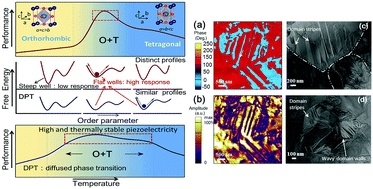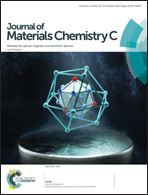Simultaneous enhancement of piezoelectricity and temperature stability in (K,Na)NbO3-based lead-free piezoceramics by incorporating perovskite zirconates†
Abstract
(K,Na)NbO3 is a leading lead-free piezoelectric system, but its thermal instability of high piezoelectricity is still one of its shortcomings compared to its lead-containing counterparts. This work found that incorporating perovskite compounds with Zr ions at the B-site can lead to the simultaneous enhancement of piezoelectricity and thermal stability. The piezoelectric coefficient d33 increased to ∼450 pC N−1, and such a high d33 value can be maintained within 10% change over a wide temperature range of 22–80 °C. The piezoelectric strain also reached 0.13% strain with a small variation (<10%) from room temperature to 130 °C. The intrinsic and extrinsic contributions to the piezoelectric effect were determined using a modified Rayleigh law as well as systematic analyses on the crystalline structure and electrical properties. A phenomenological interpretation is provided for the origin of the strong piezoelectricity and thermal stability in the diffused O–T phase transition. This study provides a new paradigm for the enhancement of electrical properties and thermal stability in lead-free piezoceramics.



 Please wait while we load your content...
Please wait while we load your content...